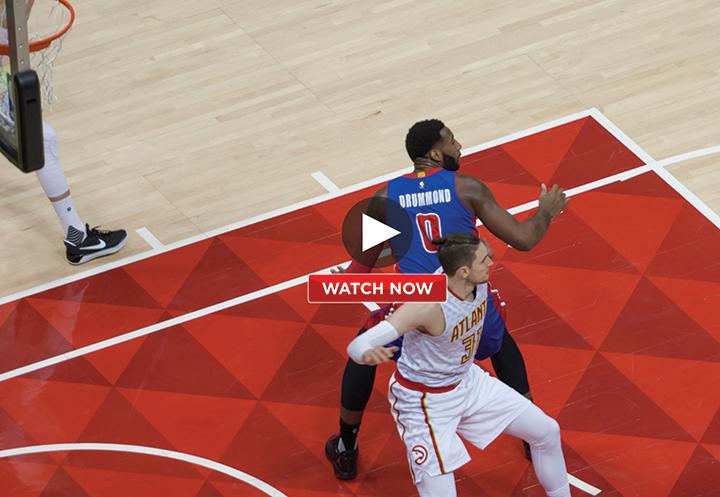
 Last year at this time, we discussed the need for recording and streaming services for sports events. We’re going to revisit that subject, but we’re also going to take a look at some of the great new developments that have come online since that time, and are still coming online. It’s all new territory, and it’s exciting to be a part of it.
Last year at this time, we discussed the need for recording and streaming services for sports events. We’re going to revisit that subject, but we’re also going to take a look at some of the great new developments that have come online since that time, and are still coming online. It’s all new territory, and it’s exciting to be a part of it.
However, we recognize that it’s also intimidating, particularly if people have not spent a lot of time previously exploring these technologies. Therefore, we’re going to present a long-range view of what’s out there and how event owners can take advantage of it.
Equipment: A sports event is recorded using a good-quality video camera and tripod (if the camera is not permanently mounted in a sports facility, which a majority of facilities don’t offer) and then simultaneously broadcast (streamed) on the Internet. That means people at home, or anywhere else, can view it with their computers, laptops, tablets, smartTVs, phones or other devices. And because it has been recorded, it also allows people to view it on demand.
Internet Access: You’ll need to know whether your competition venue has Internet access and if so, whether you can tap into it. You’ll need to know whether it’s hardwired or Wi-Fi, and if there is a charge for it. One question your live-streaming partner will ask is the speed of the service. If you’re at the venue, go to a website called speedtest.net and you’ll be able to easily test your upload and download speed. (If you’re not at the venue, have your onsite contact do this.) You need speeds of at least 1,000K or 1 mbps.
Service Options: If you have decided to have an event recorded and streamed, you have several options. You may choose to have the event recorded by someone from the company that is doing your live-streaming, or you may choose to use a professional who works in the area where your tournament is, who is responsible for interfacing with the streaming company (which might even be located in another state) and uploading all content to that vendor, who then sets up hosting services.
In some cases, event owners want to save money by recording events themselves; most companies that provide streaming and hosting services don’t object to that, but they want people to talk to them in advance to discuss what equipment they have and what they need. For example, in addition to the camera, people will need a computer or laptop that can be used as an encoder. They will need to make sure the camera can be connected to that computer or laptop, so they’ll need the right equipment for that. The right vendor can help you source that equipment.
Advance Notice: While it’s often possible to make arrangements for live-streaming at the last minute, it’s not something we advise. It’s best to start working with your vendor at least 30 days out (and with more additional time if you have it).
Those are just a few of the basics for recording and streaming. Those needs actually haven’t changed since last year, but the technology available has taken huge leaps forward. At the Consumer Electronics Show (CES), held in the early part of this year, many of the newest technologies were previewed. If you missed CES, here is a quick and painless (and also very exciting) overview of what the market is bringing us.
Two-Dimensional, and even Three-Dimensional Cameras are allowing us to record sports so that those watching at home can get a view that makes them feel like they are actually at the ballpark (or on the soccer field or on the wrestling mat – or anywhere else, really). When events are recorded this way, it allows viewers to mouse left and right and see the field, the players and so on. (If you want to see how this works, there are plenty of examples on YouTube and you can take a look at them free of charge.)
Many people are surprised to find that as advanced as this technology is, it’s pretty accessible to even those who do not consider themselves tech-savvy. The cameras capable of recording in 2D are available in stores and through online merchants; they include brands like LG Samsung, Bublcam, Sphericam, Gyrocam, Fuze, Kodak, GoPro and Canon. Some of these names are already commonplace, so make sure you’re looking at a camera that is able to record in the format you need.
Cameras that can record in 3D include Jaunt and Nokia Ozo. Invest in a camera that fits your needs. Something we always recommend when people are unsure is to work with a vendor who can help you find what works, either to rent or purchase it. As a vendor, we can assure you the expertise and the guidance are available to those who want to seek it out.
 Virtual Reality, which is what the 2D and 3D cameras are bringing you, is already being used by the NBA and the NFL; those organizations are working with a company called NextVR to bring viewers an immersive experience. As a side note, VR isn’t about the holograms you see in sci-fi movies; to access it, all you really need is a relatively inexpensive pair of goggles (seriously; they only cost about $50) and suddenly, you feel like you’re right there with the players.
Virtual Reality, which is what the 2D and 3D cameras are bringing you, is already being used by the NBA and the NFL; those organizations are working with a company called NextVR to bring viewers an immersive experience. As a side note, VR isn’t about the holograms you see in sci-fi movies; to access it, all you really need is a relatively inexpensive pair of goggles (seriously; they only cost about $50) and suddenly, you feel like you’re right there with the players.
What’s up next on the horizon? Something that will make you think of those sci-fi movies:
Augmented Reality. That is when you’ll be able to put on a pair of glasses and see the players in 3D in front of you, as though they were in your living room. That’s something most people don’t need to be worrying about at the moment; however, all we can say is that the technology is coming and at some point (sooner rather than later), it will be available. Maybe next year, we can do a recap on that. For now, just keep it on your radar.
What can we gain from the new technology? So many things, really. We have the ability to give people at home a far more intimate and immersive experience if they can’t attend an event in person (or even if they have and they want to relive it.) But we also have the ability for coaches, event directors and others to harness technology to teach athletes what happens on the field of play. It’s far more instructional and descriptive than a talk, and can prepare athletes far better for the venue they’re going into and the experience they’re about to have. And it’s not just in live sports that you’re going to see VR (and ultimately AR) at work. eSports has already taken this market and run with it, making their own events even more exciting to spectators – and we anticipate this sector will continue to develop.
This is just the beginning, too. The technology continues to evolve. We’ve gone from being able to use traditional recording and streaming to preserve the memory of the game (thus allowing people to revisit that memory any time they want it) to actually being able to be inside that memory. We liken it to the difference between looking through a house window at something, versus actually being inside the house as it occurs and watching it unfold.
With so much to tell, and so much to share, trying to put it into one short article and expecting people to retain it is like inviting people to drink from a fire hydrant – more than they expected when they ventured over. Keep in mind, too, that before you make purchasing decisions on equipment you’re not entirely familiar with, there are professionals out there who can help and guide you along. Talk with your streaming partner about what your goals are, what your budget is and what you feel you can take on, work-wise. This will lead to a far more productive outcome.

